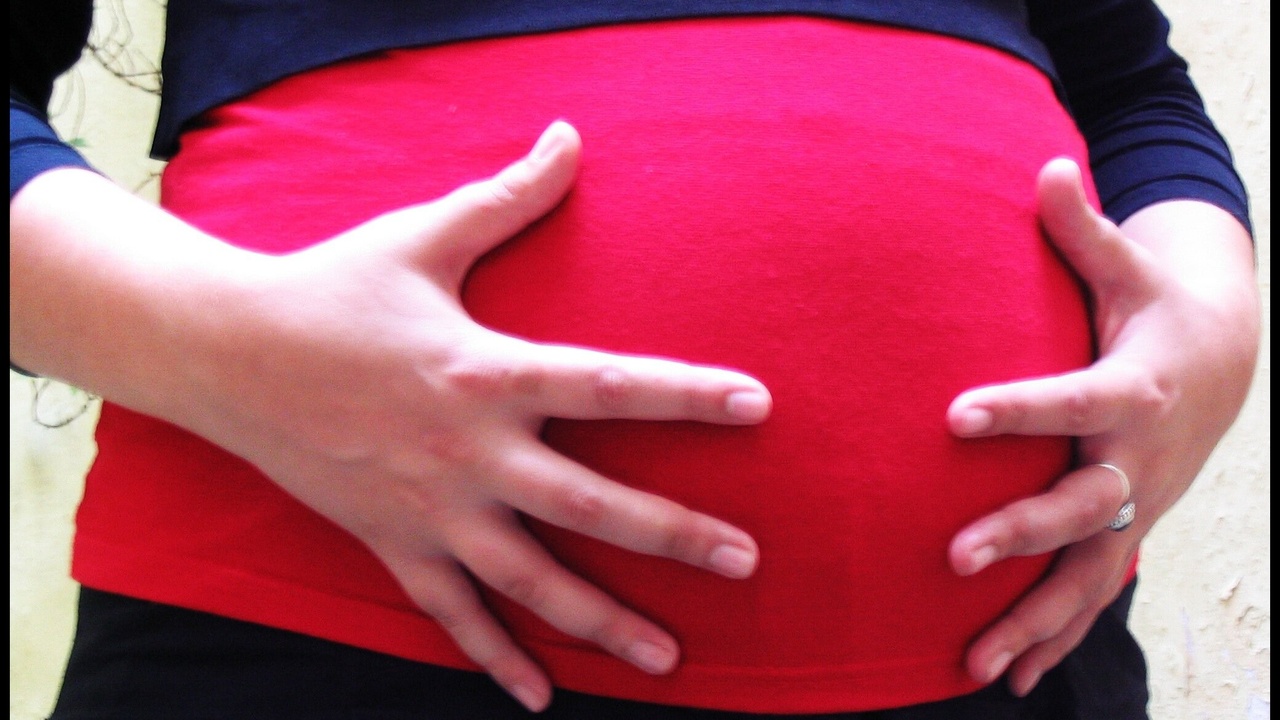Is it too late to close my diastasis?

The Question:
"I was told that I had diastasis recti after delivering my fourth child. My fourth child is now two years old, and I still can't get rid of my "pooch!" Is it too late to close my diastasis?"
My Answer:
Almost every woman experiences a separation of the abdominal muscles — called diastasis recti — during pregnancy. This is natural! It's the way your body expands the abdomen to provide room for your growing baby. Unfortunately, for (approximately) two out of three women, diastasis recti persists after childbirth.
What is diastasis recti?
When the Rectus Abdominis (sometimes referred to as "six-pack") muscles separate, the linea alba (the connective tissue that joins the muscles together) stretches sideways and becomes thin and weak. This separation + connective tissue stretching is called diastasis recti.
Some separation is normal and quickly reverses on its own, but a larger separation takes time and special care to close.
Many women aren't aware that they have diastasis recti until well after delivery, or even after their baby has become a toddler, when they develop an abdominal hernia, chronic low back pain, or they just can't get rid of the "mommy tummy" pooch. All of these problems can occur due to an unclosed diastasis. The lingering "mommy tummy" may actually be due to protruding abdominal organs. One of the functions of the abdominal muscles (abs) — besides supporting your posture, providing spinal stability, and preventing low back pain — is to compress your abdominal contents and "keep everything in place." If you have an unclosed diastasis, your abs aren't able to compress your abdominal contents the way they did before they separated.
Self-test: Do you have diastasis recti?
Check out this tutorial. Even if you had your baby YEARS ago, check yourself! This link cues the video to start at 3:52, which is when I show the technique for a diastasis recti self-check. If you’d like to watch the entire video, simply watch from the beginning:
The good news is that if you have diastasis recti, it's not too late to treat it.
A diastasis can close on anyone at any time with proper care and healing of the overstretched connective tissue. How long it will take to heal depends on the severity of your diastasis (the distance between the separated abdominal muscles + the integrity of the stretched connective tissue) as well as your commitment to following the program.
"What's the program?"
Glad you asked! To close your diastasis, you will need to focus on: proper breathing, proper posture, proper management of your intra-abdominal pressure, and strengthening your pelvic floor and your deep abdominal muscles. These deep abs include the Transverse Abdominis, which lie underneath the outermost abdominal muscles (Rectus Abdominis) that separated during the diastasis.
For a guided healing program specifically designed for postpartum healing and diastasis recti recovery, check out MUTU System. MUTU is a foundational core and pelvic floor strengthening program I recommend for all mamas, whether you’re 6 weeks or 16 years postpartum. Use code FEMTRIBE at checkout to get MUTU for 10% off!
If you're one of my Lift for Prolapse Relief clients, you will also learn strategies that will help your diastasis.
If you prefer to get started on your own, I’ve outlined some important steps you can take for self-healing.
In addition to the three basic steps below, you also need to:
-
"zip up" your core when lifting, pushing, or pulling
-
get out of bed without jackknifing (in other words, don't sit bolt upright when moving from supine to sit! Roll to your side first, and then push yourself up with an exhale.)
PLEASE NOTE that you can make the separation worse by doing the wrong exercises.

Many new mamas are anxious to return to their pre-baby body and embark on an intense abdominal program including crunches, sit-ups, and other exercises that focus on trunk flexion. Crunches and sit-ups have their place in the world of core strengthening, but they are not appropriate for women with diastasis recti... at least, at first. Crunches can create a diastasis or make a diastasis larger if you have one. If you have a diastasis, you will need to discontinue crunches or any supine (back-lying) exercises that require your shoulders to be off the floor...at least initially.
While you're healing, use the exercises outlined below.
STEP ONE: POSTURE
Good posture is important... Don't blow it off! Proper alignment keeps your core muscles at the exact right length for optimal activation and strength. Good posture prevents and treats back pain, and helps you look taller and slimmer as well. To learn how to find and maintain proper posture, watch my video below:
STEP TWO: PELVIC ROCKS WITH SPLINTING
After you've figured out your posture, try the "pelvic rock." I use this exercise in many of my videos, and it's a great way to "wake up" your pelvic floor and deep abdominal muscles... as well as your breathing diaphragm! Try rocking your pelvis back and forth (i.e. making your back arch off the floor and then pressing your low back down into the floor) and see how it feels. If you have NEVER attempted a core strengthening program before, then let this be your primary exercise for now.
Do pelvic rocks for 2-3 minutes each day for 1-2 weeks before moving on to the exercise routine in step three.
While pelvic rocking, try "splinting" — manually pushing your Rectus Abdominis muscles gently together (press inward, toward your midline, using your hands).
The pelvic rock is the first exercise in the following video:
STEP THREE: ADD MORE (NON-CRUNCH) CORE WORK
Feeling good about pelvic rocks and posture? Great! Now it's time to add in some more advanced deep core strengthening! Try my 30-Minute Crunchless Abs routine (below), or for a fully guided healing program, look into MUTU System. Use code FEMTRIBE at checkout to get MUTU for 10% off. I adore MUTU and recommend it as a foundational strengthening program for all of my postpartum clients.
FOR THE LONG HAUL:
Continue to "zip up" during daily tasks that require extra trunk stability/control, continue to practice good posture throughout the day, and keep strengthening your deep core muscles. De-emphasize crunches and activities that require trunk flexion or lifting your head and shoulders off the ground. Work with a trainer who understands diastasis recti if you want to incorporate crunches again, or watch my video about how to do crunches right. You have a special condition — you need to train SMART in order to heal. Your journey toward healing may take some time, but it's worth it!
To Recap:
- For a guided diastasis and postpartum recovery program, check out MUTU!
- If you have prolapse, then my Lift program will also help reduce your diastasis.
- If you prefer to self-treat on your own, without a guided program, then remember to focus on posture and deep core exercises that AVOID crunches and sit-ups... at least, for now.
-
Lastly, don’t forget to contact a women’s health physical therapist in your area for diagnosis and treatment specific to your needs!
*NOTE: This website in general, and this article specifically, is for general information and educational purposes only. It is not intended to diagnose or treat any medical condition, but rather to understand what options are available. Please seek the advice of a physician to properly diagnose your symptoms.
Join me in working together to heal pelvic floor-related issues such as pelvic organ prolapse and bladder leakage! Follow me on social and join my email list today!
Does your pelvic floor need help?
Many women think they just need live with the changes they’re experiencing
“down there,” but this is NOT the case. Take the short quiz to find out if you have issues that can be solved naturally.







